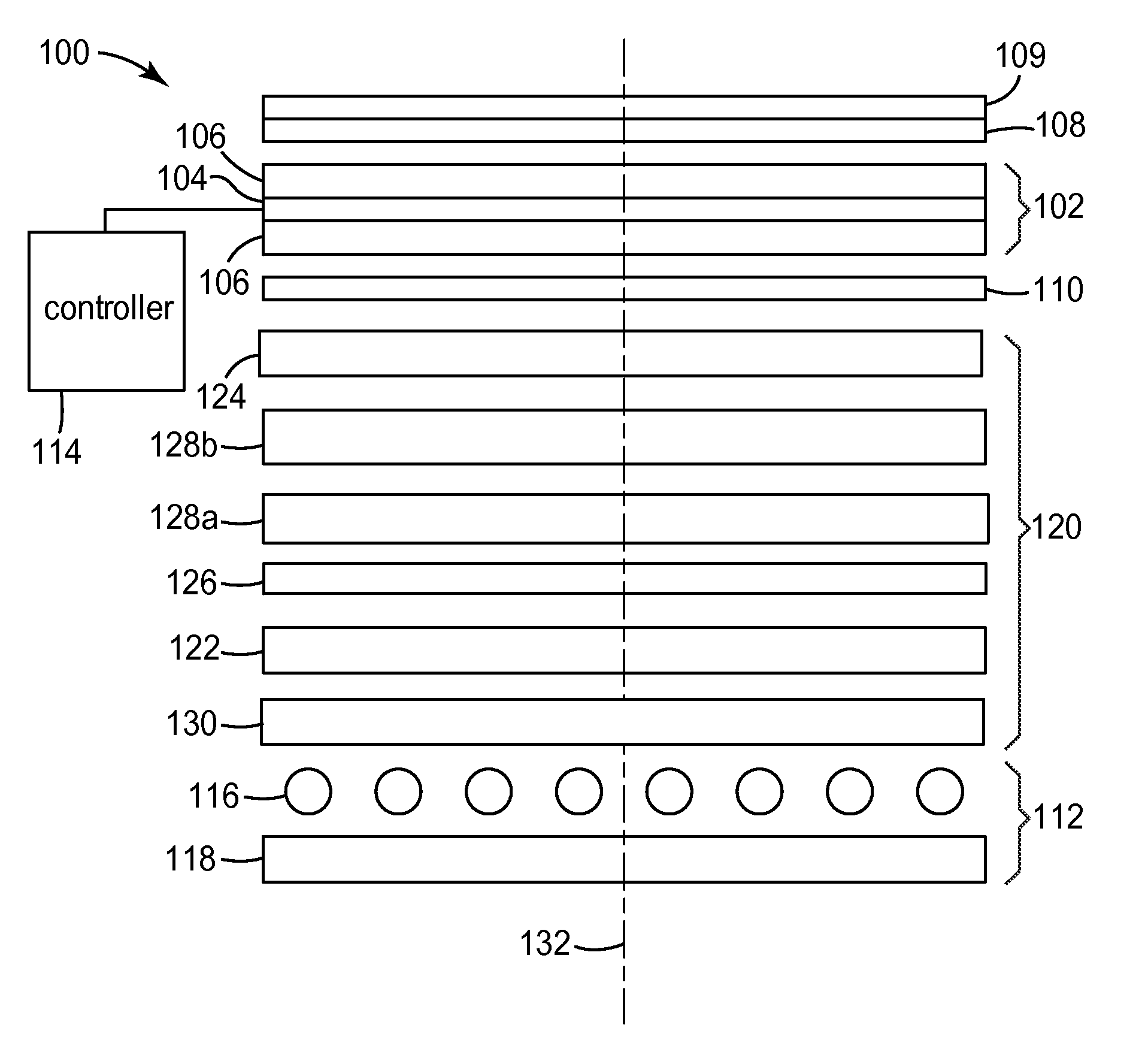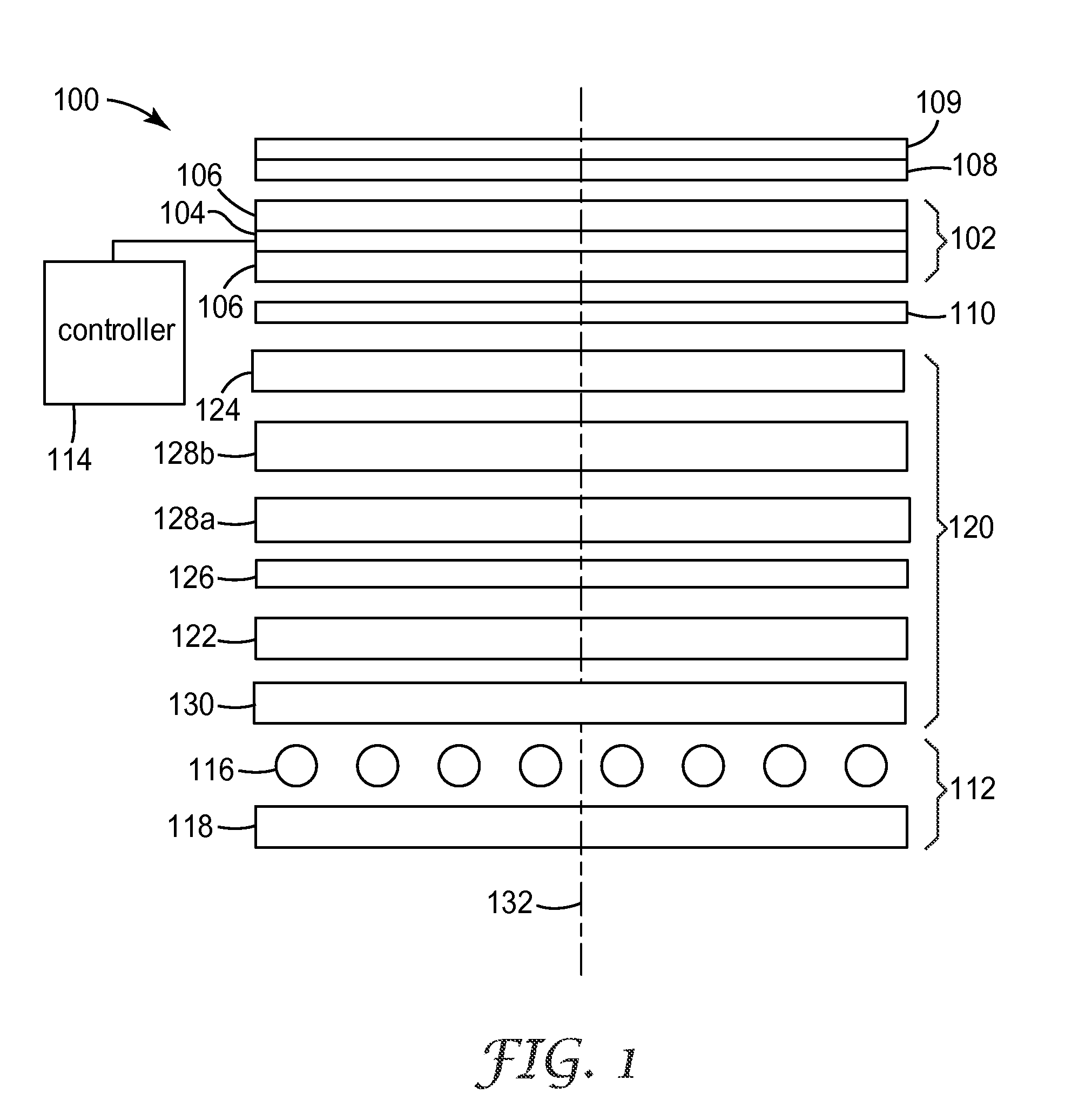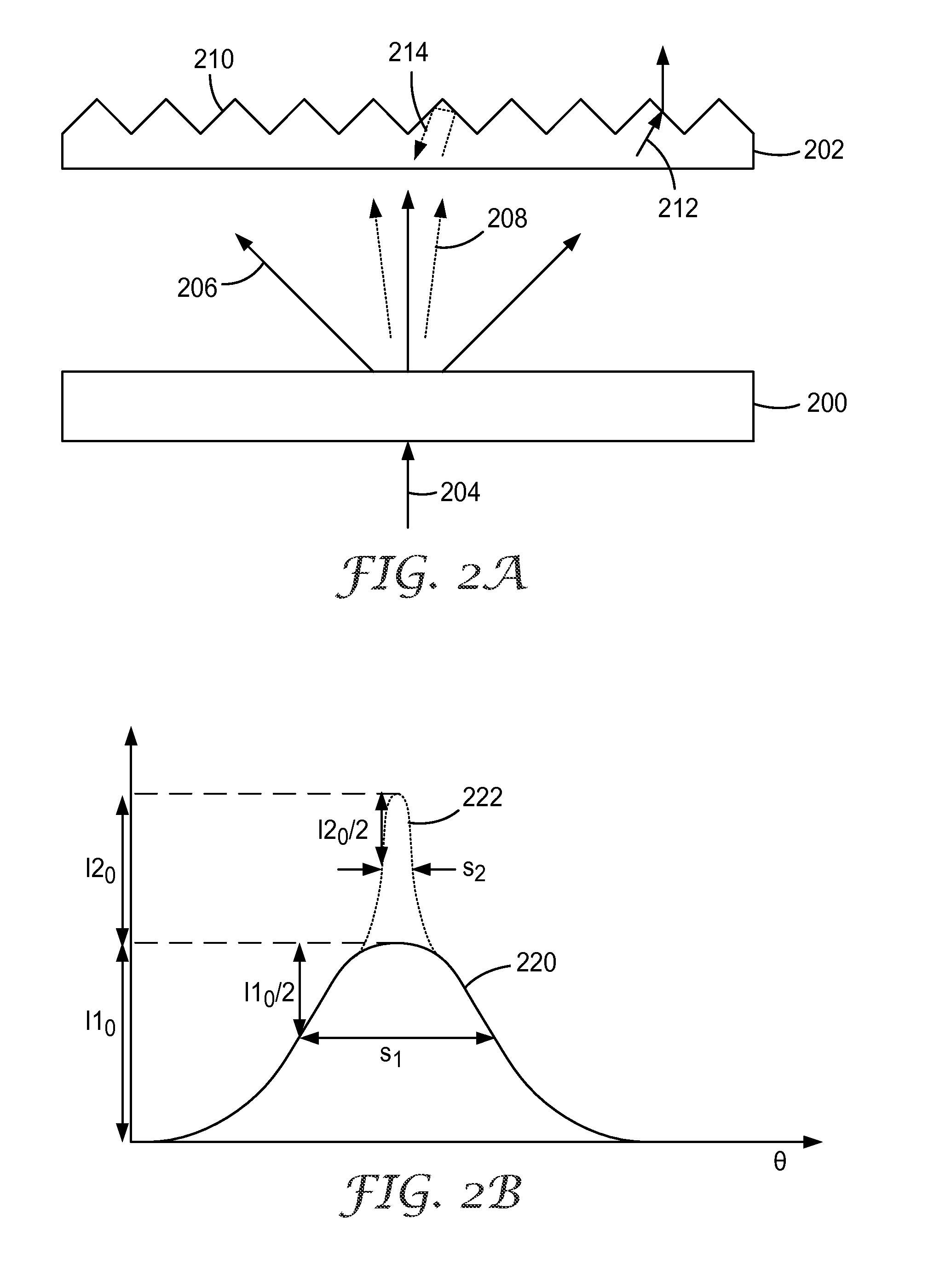Brightness enhancing film and film based diffuser for improved illumination uniformity of displays
- Summary
- Abstract
- Description
- Claims
- Application Information
AI Technical Summary
Benefits of technology
Problems solved by technology
Method used
Image
Examples
example 1
Punch-Through Diffuser and Reflective Polarizer
[0088]The first modeled example is discussed with reference to FIGS. 8A-8C. The model backlight 800 is based on a diffuser 802 with a reflective polarizer 804 above the diffuser. The lamps 806 had a center to center spacing of S=35 mm and the separation between the rear reflector 808 and the diffuser 802 was 20 mm. FIG. 8B shows the calculated luminance as a function of position across the backlight 800 for increasing values of Upoly, which relates to increasing concentrations of polystyrene bead in the diffuser 800. The assumed value of Utitania, was 33 mm−1. The Upoly values for the different curves are listed in Table III. Curve 832 shows the luminance of a standard diffusing plate having a single pass transmission of 65%.
TABLE IIIUpoly values for Example 1UpolyFIG. 8B - curve no.FIG. 8C - curve no.082084010842208228443084640824848508506082685280828854100830856
[0089]FIG. 8C shows the luminance uniformity as a function of D (mm) for t...
example 2
Punch-Through Diffuser with Brightness Enhancement and Reflective Polarizer
[0091]The second modeled example is discussed with reference to FIGS. 9A and 9B. The model backlight 900 was based on a backlight having a punch-through diffuser 902, a reflective polarizer 904 and a brightness enhancement film 910. The brightness enhancement film 910 was modeled as a prismatic film having uniformly high prismatic ribs on a 50 μm pitch with a 90° apex angle. Lamps 906 were placed above a rear reflector 908. The lamps 906 had a center to center spacing of S=35 mm and the separation between the rear reflector 908 and the diffuser 902 was 20 mm.
[0092]FIG. 9B shows the calculated luminance uniformity as a function of cavity depth, D, for various values of Upoly, which relates to increasing concentrations of polystyrene beads in the diffuser 902. The assumed value of Utitania was 33 mm−1. The Upoly values for the different curves are listed in Table VI.
TABLE IVUpoly values for Example 2UpolyFIG. 9...
example 3
Punch-Through Diffuser with Reflective Polarizer, Brightness Enhancement and EUF
[0094]The third modeled example is discussed with reference to FIGS. 10A-10C. The model backlight 1000, schematically illustrated in FIG. 10A was based on a backlight having a punch through diffuser 1002, a reflective polarizer 1004 and a brightness enhancement film 1010. Lamps 1006 were placed above a rear reflector 1008. The lamps 1006 had a center to center spacing of S=35 mm and the separation between the rear reflector 1008 and the diffuser 1002 was 20 mm. A sheet of EUF 1012 was placed below the punch-through diffuser 1002, and a 2 mm thick clear plate 1014 was placed below the EUF 1012.
[0095]The EUF 1012 was shaped with ribs on a 50 μm pitch, without any spaces between the ribs. Different rib designs were used, as shown in FIG. 10B. The ribs were truncated prisms, similar in shape to those illustrated in FIG. 6B. The sides of the ribs were sloped at different angles, represented by the angle, w, b...
PUM
 Login to View More
Login to View More Abstract
Description
Claims
Application Information
 Login to View More
Login to View More - R&D
- Intellectual Property
- Life Sciences
- Materials
- Tech Scout
- Unparalleled Data Quality
- Higher Quality Content
- 60% Fewer Hallucinations
Browse by: Latest US Patents, China's latest patents, Technical Efficacy Thesaurus, Application Domain, Technology Topic, Popular Technical Reports.
© 2025 PatSnap. All rights reserved.Legal|Privacy policy|Modern Slavery Act Transparency Statement|Sitemap|About US| Contact US: help@patsnap.com



